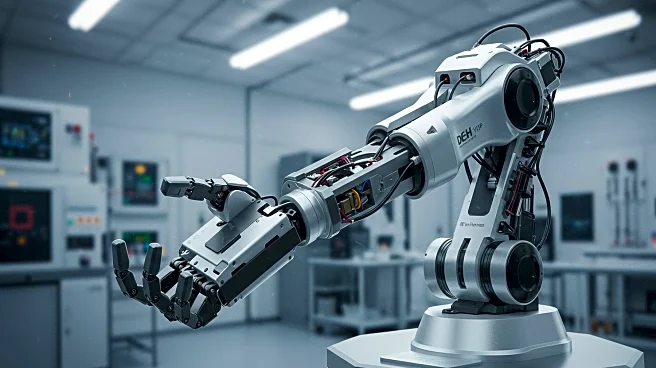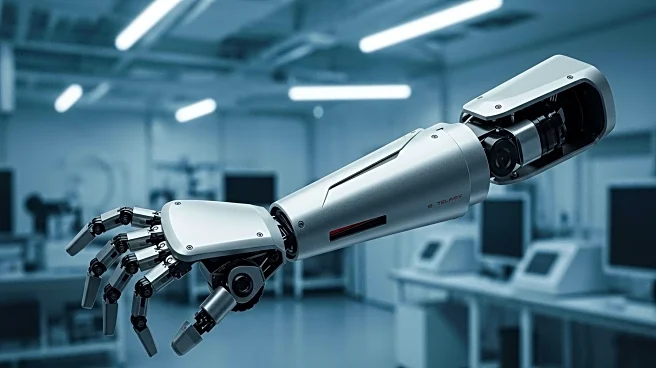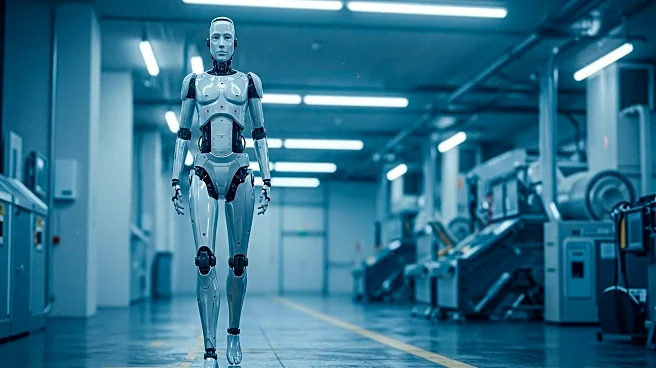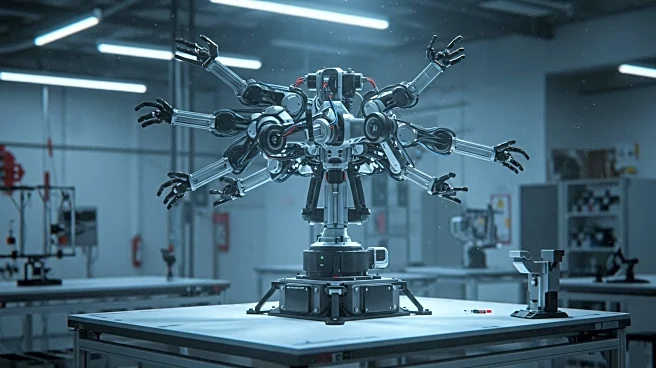What's Happening?
Researchers at the University of Nebraska-Lincoln have developed a new layered material designed for soft robotics that can autonomously identify and repair damage. This material is capable of detecting punctures or extreme pressure, pinpointing the location of the damage, and initiating self-repair without human intervention. The concept of self-healing materials is not new, but this development represents a significant advancement in the field. Previous efforts in self-healing technology have focused on workarounds or bypass schemes rather than true biological repair. The new material aims to emulate the self-healing capabilities found in living organisms, offering potential applications in various industries, including robotics and electronics.
Why It's Important?
The development of self-healing materials has significant implications for the future of robotics and electronics. By enabling materials to autonomously repair themselves, this technology could lead to more durable and reliable systems, reducing maintenance costs and extending the lifespan of devices. Industries that rely on robotics, such as manufacturing and healthcare, could benefit from increased efficiency and reduced downtime. Additionally, the technology could be applied to consumer electronics, potentially leading to more resilient products. The ability to self-repair could also enhance safety in critical applications, such as aerospace and automotive sectors, where material failure can have severe consequences.
What's Next?
The next steps for this technology involve further research and development to refine the self-healing process and expand its applications. Researchers may focus on improving the material's ability to handle different types of damage and enhancing its repair speed. Collaboration with industry partners could accelerate the commercialization of this technology, bringing self-healing materials to market. As the technology matures, it may attract interest from various sectors looking to integrate self-repair capabilities into their products. Regulatory considerations and safety testing will be essential to ensure the material's reliability in real-world applications.
Beyond the Headlines
The ethical and environmental implications of self-healing materials are worth exploring. By reducing waste and extending the lifespan of products, this technology could contribute to more sustainable practices in manufacturing and consumer electronics. However, the development and deployment of such materials must consider potential risks, such as unintended consequences of autonomous repair processes. The cultural impact of self-healing technology may also influence consumer expectations, as people become accustomed to products that can repair themselves, potentially shifting the focus from disposable to durable goods.











